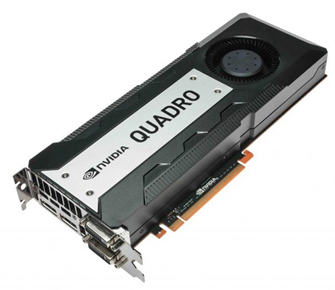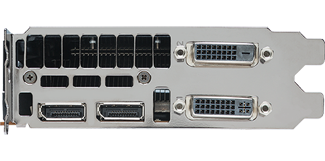The Nvidia Quadro K6000 and Kepler Technology Reviewed
Published:
The number for the K6000 speak for themselves so here they are:
- 2880 Stream Processors
- 240 Texture Units
- 48 ROPs
- A core clock of 900Mhz 12 GB of GDDR at 6Ghz
- A 384-bit memory bus Max power usage of 225W
- A 28nm manufacturing process
Apart from the fact that there is no faster workstation graphics card manufactured by Nvidia today, to really get the leap forward that the K6000 represents we have to compare it to the card that it replaces, the Quadro 6000. Although the graphics performance of the K6000 is only about 1.7 times that of the 6000, it has 5 times the compute power and double the memory. Clearly the Fermi design is following the modern trend of massive, parallel, GPU accelerated computing for huge data sets and as more professional software tools bake in support for this technology, the more important it will become.


The huge 12GB frame buffer and massive amount of shaders point to this being the closest you can come to a supercomputing solution in a workstation form-factor today. The fact that the K6000 achieves all of this while only using 21W more at peak than the Quadro 6000 is frankly mind-blowing. In terms of raw power the Geforce Titan Z gives the K6000 a run for its money in many applications, especially since the Titan Z allows for a quad-GPU solution whereas the K6000 will only work as a dual-GPU arrangement. We musn’t forget however however that Quadro cards are not built for performance at all cost, but the best performance that can be delivered 24/7, any day and every day. The GPUs put into the K6000 cards are top-binned components and the supporting electronics are of a much higher grade than those found within a consumer grade device. In addition to this you will have access to round-the-clock client support directly from Nvidia and can rest assured that the K6000’s drivers have been carefully optimised and certified for applications such as Maya and AutoCAD.
The leap in compute power from the last generation to this is so huge, that VFX and SciTech professionals have had new possibilities and practicalities opened to them suddenly that were simply unthinkable a single hardware generation ago. It’s been reported on Nvidia’s own blog that Pixar professionals who are using the K6000 can now do things in real-time that were previously simply not possible. Not to mention that 4K video production is now something that’s in reach with this card at high-speed, especially thanks to the huge 12GB frame buffer.
If you think the K6000 is what you need to get the job done, don’t hesitate to get in touch with us, our friendly and highly experienced staff will recommend a K6000-based build that will be optimized for your individual needs.